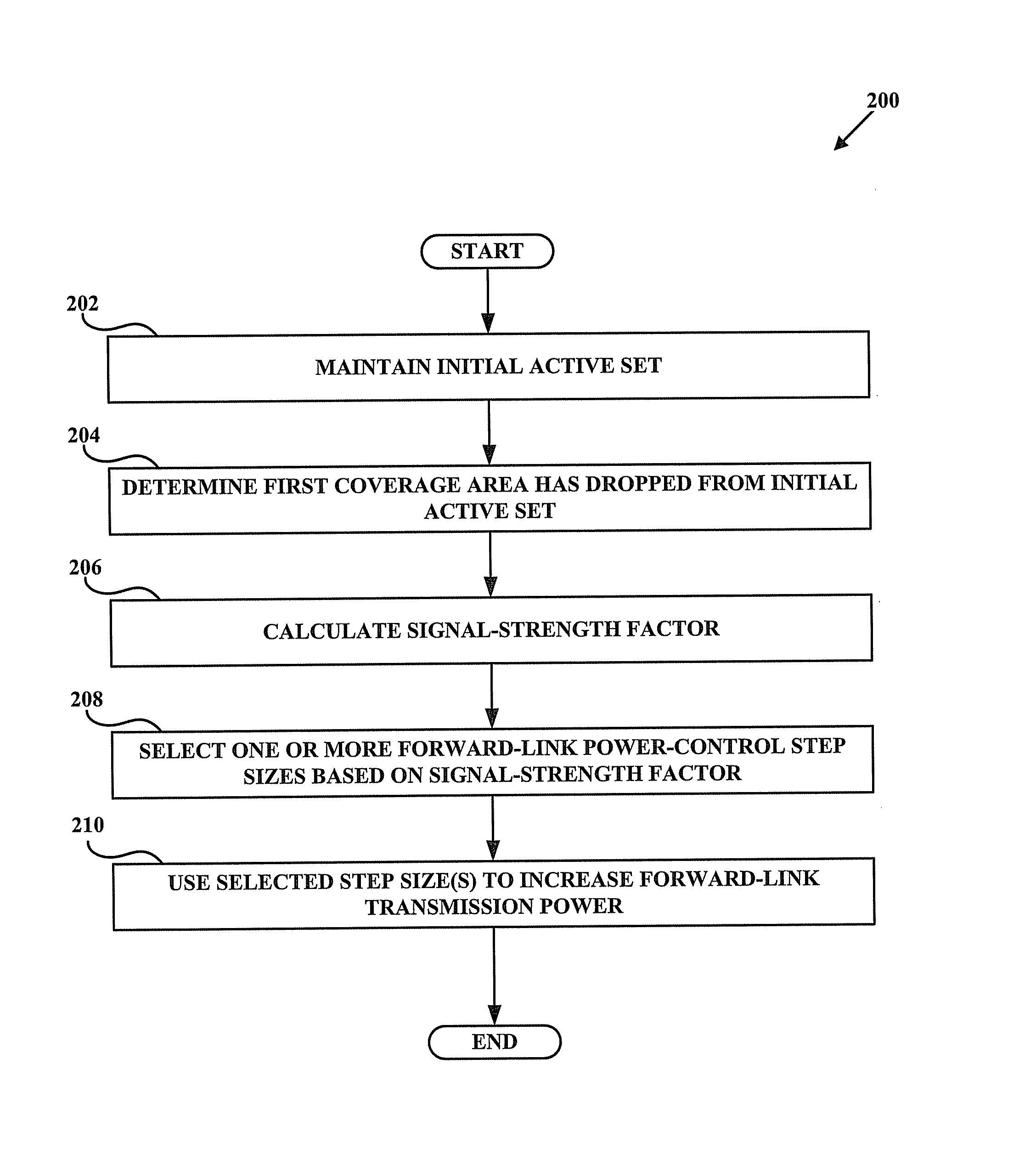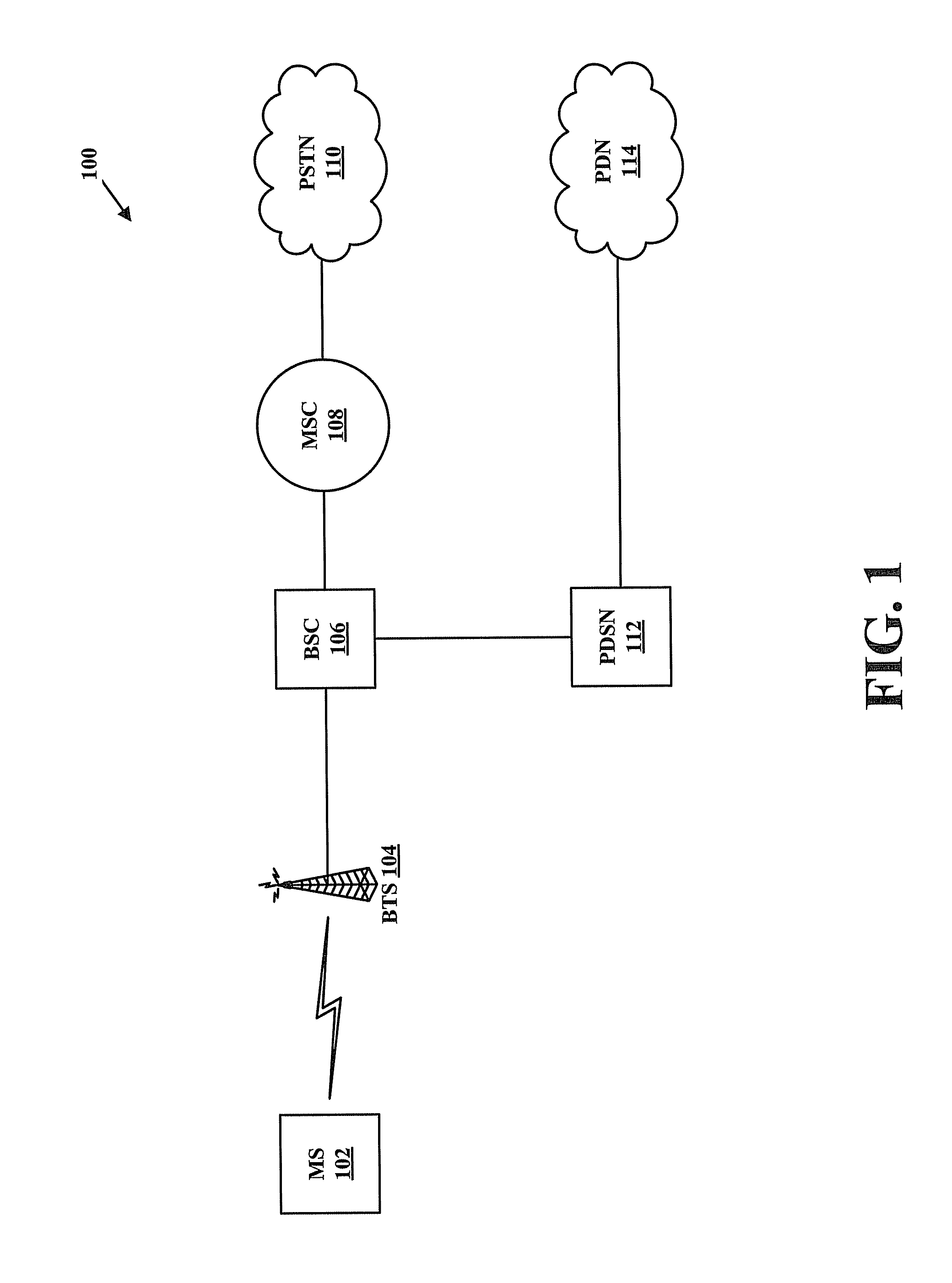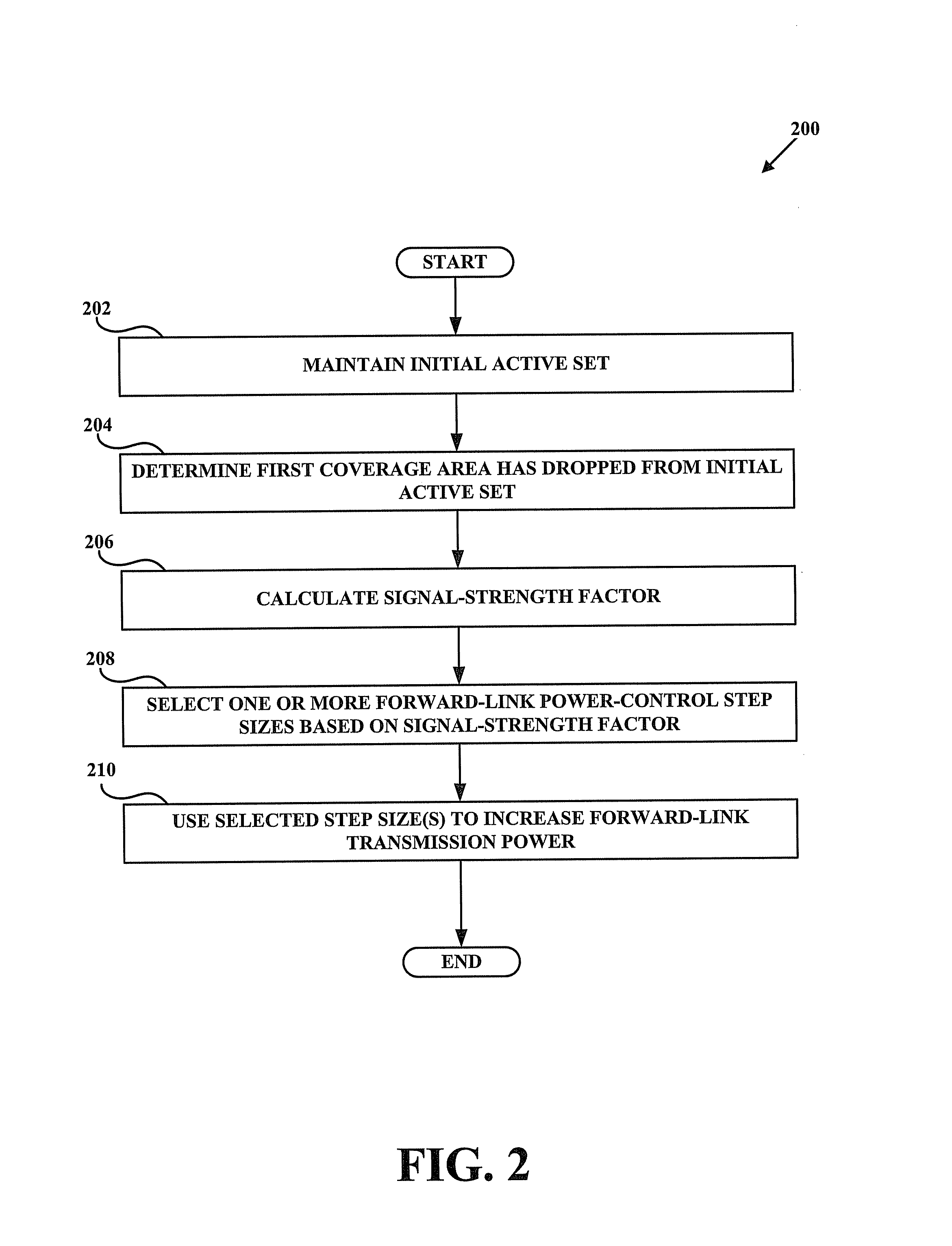Selecting a power-control step size based on relative signal strength among signals in an active set
a technology of power-control and signal strength, applied in power management, transmission monitoring, electrical equipment, etc., can solve problems such as excessive power consumption, frame errors, and mobile station signal may be considered too strong
- Summary
- Abstract
- Description
- Claims
- Application Information
AI Technical Summary
Problems solved by technology
Method used
Image
Examples
Embodiment Construction
1. Introduction
[0037]The inventors of the presently disclosed methods and apparatus have recognized that conventional methods for forward-link and reverse-link power control do not always act as rapidly as desired to counteract sudden changes in a mobile station's active set. For example, when the strongest sector suddenly drops from the active set, the collective signal quality as received at the mobile station may become poor so quickly that conventional power-control methods are unable to counteract the problem before the call is dropped or call quality is affected.
[0038]To address the limitations of conventional power-control methods, disclosed herein are methods and apparatus varying power-control-adjustment increments (i.e. step sizes). For example, when it is detected that a strongest sector has dropped from a mobile station's active set (resulting in a modified active set), forward-link power-control step sizes for one or more coverage areas remaining in that mobile station'...
PUM
 Login to View More
Login to View More Abstract
Description
Claims
Application Information
 Login to View More
Login to View More - R&D
- Intellectual Property
- Life Sciences
- Materials
- Tech Scout
- Unparalleled Data Quality
- Higher Quality Content
- 60% Fewer Hallucinations
Browse by: Latest US Patents, China's latest patents, Technical Efficacy Thesaurus, Application Domain, Technology Topic, Popular Technical Reports.
© 2025 PatSnap. All rights reserved.Legal|Privacy policy|Modern Slavery Act Transparency Statement|Sitemap|About US| Contact US: help@patsnap.com



